CHM curator of religion and community history Rebekah Coffman talks about the significance of Ramadan and shares a brief history of Chicago’s Muslim communities.
Sundown on March 23 marks the beginning of the Islamic month of Ramadan, a time of prayer, fasting, and personal and community reflection. Ramadan is the ninth month of the Hijri (the Islamic lunar calendar) and considered the holiest month of the year. It commemorates the revelation of the Quran to the Prophet Muhammad. Sawm (fasting) is one of the five pillars of Islam. During Ramadan, people fast from sunrise to sunset for 30 days, breaking the fast daily with the evening iftar meal. The month closes with Eid al-Fitr, a daylong celebration that includes saying special prayers, charitable giving of time and money, spending time with family, and eating delicious food, especially sweets like dates, cookies, donuts, and pies.
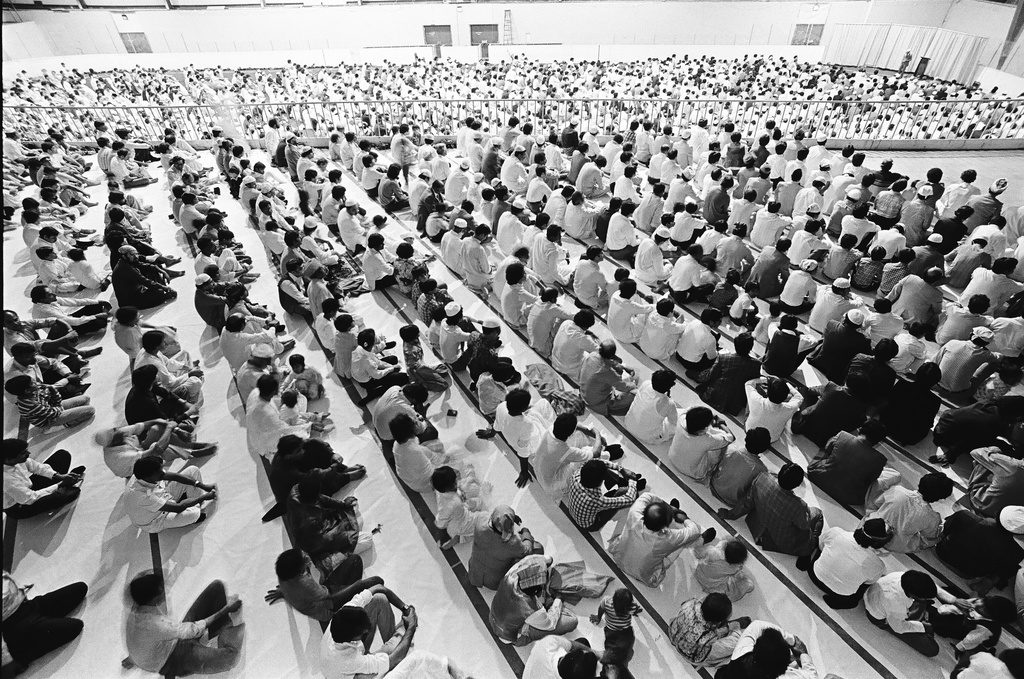
Eid al-Fitr celebration marking the end of Ramadan at the Odeum Expo Center in Villa Park, Illinois, 1983. ST-19041602-0011, Chicago Sun-Times collection, CHM
The Muslim community in Chicago and its metropolitan area is richly diverse thanks to 130 years of migration. The first documented mentions of Islam in Chicago are from the 1893 World’s Columbian Exposition (WCE), though Muslim presence in the United States predates the exposition through the lives of enslaved Africans and Middle Eastern and South Asian merchants and sailors in the 18th and 19th centuries. At the fair, Muslim migrants from Algeria, Egypt, Nubia, Persia, Sudan, Tunisia, Turkey, and India came to visit and work, with some staying and settling in the city.
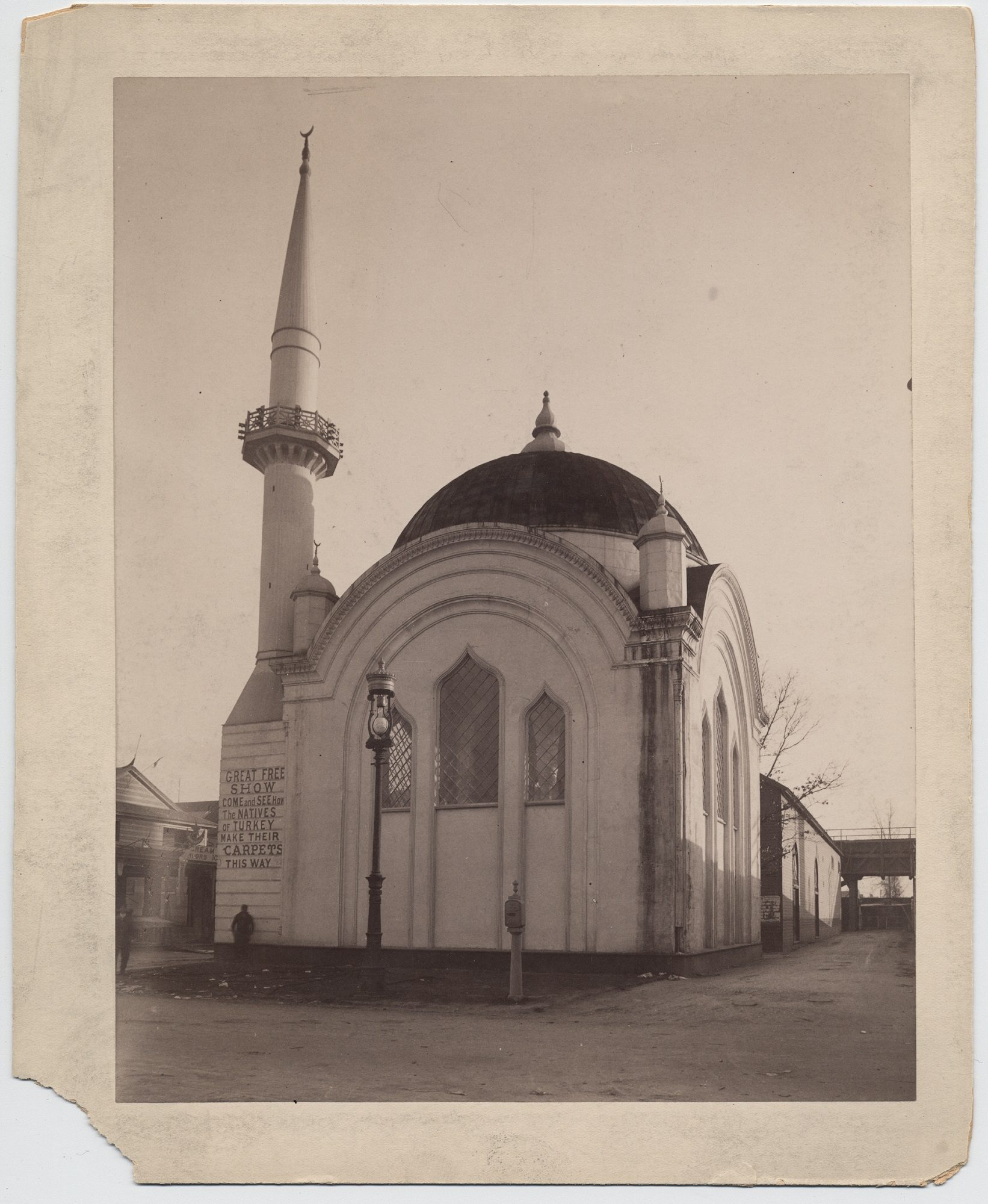
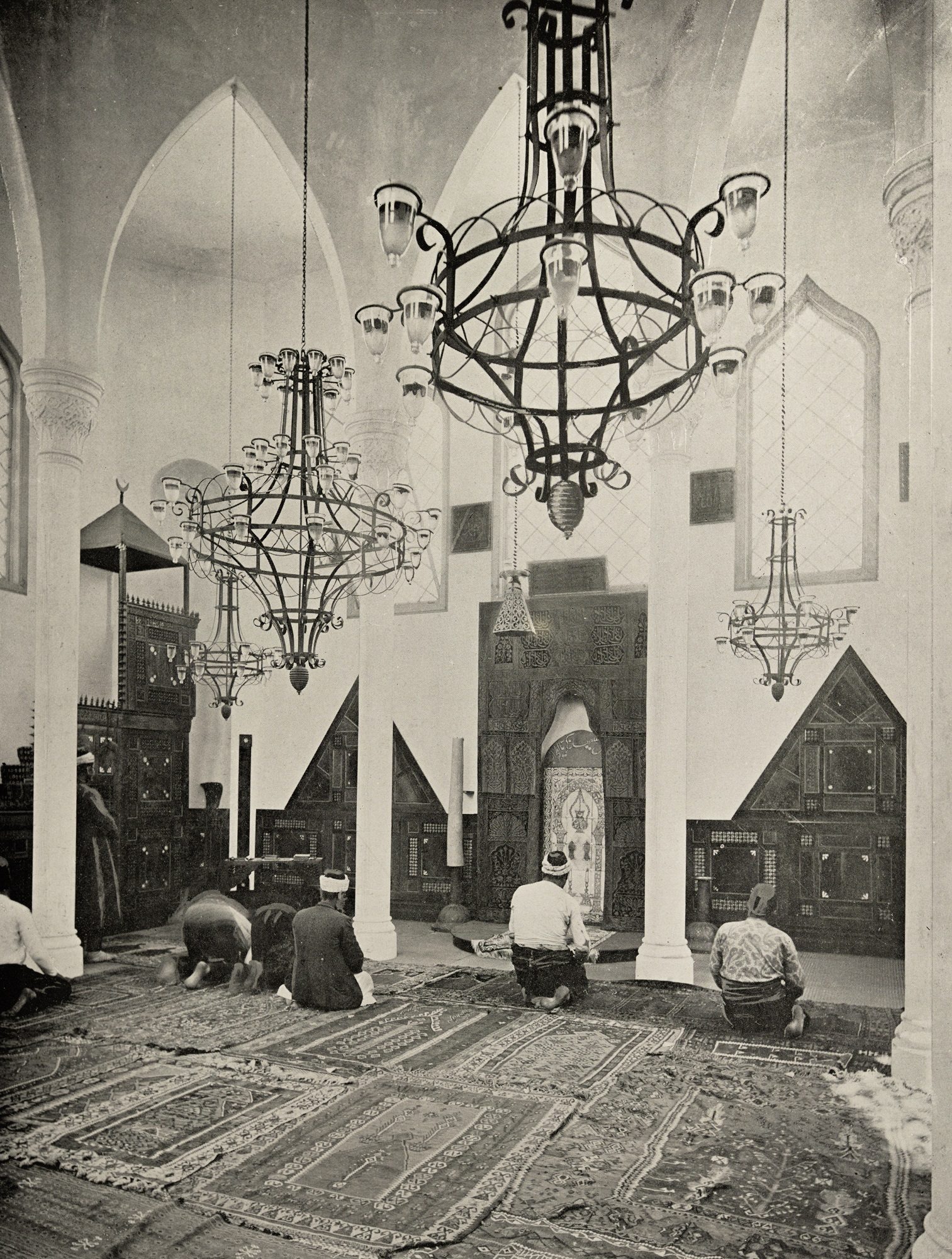
Exterior and interior views of the Turkish mosque at the World’s Columbian Exposition, 1893. CHM, ICHi-020531 (left) and ICHi-093978 (right).
The WCE hosted some of the earliest purpose-built mosques in the country, with three total—one each in the Ottoman, Egyptian, and Javanese villages on the Midway Plaisance. Though the WCE officially opened after the month of Ramadan, there is documented awareness of the month of fasting. The WCE mosques hosted other religious rituals, including regular public calls for prayer, known as the adhan, and were closed to spectators during prayer times. As with most buildings constructed for the WCE, the mosques were only temporary and no longer stand today.
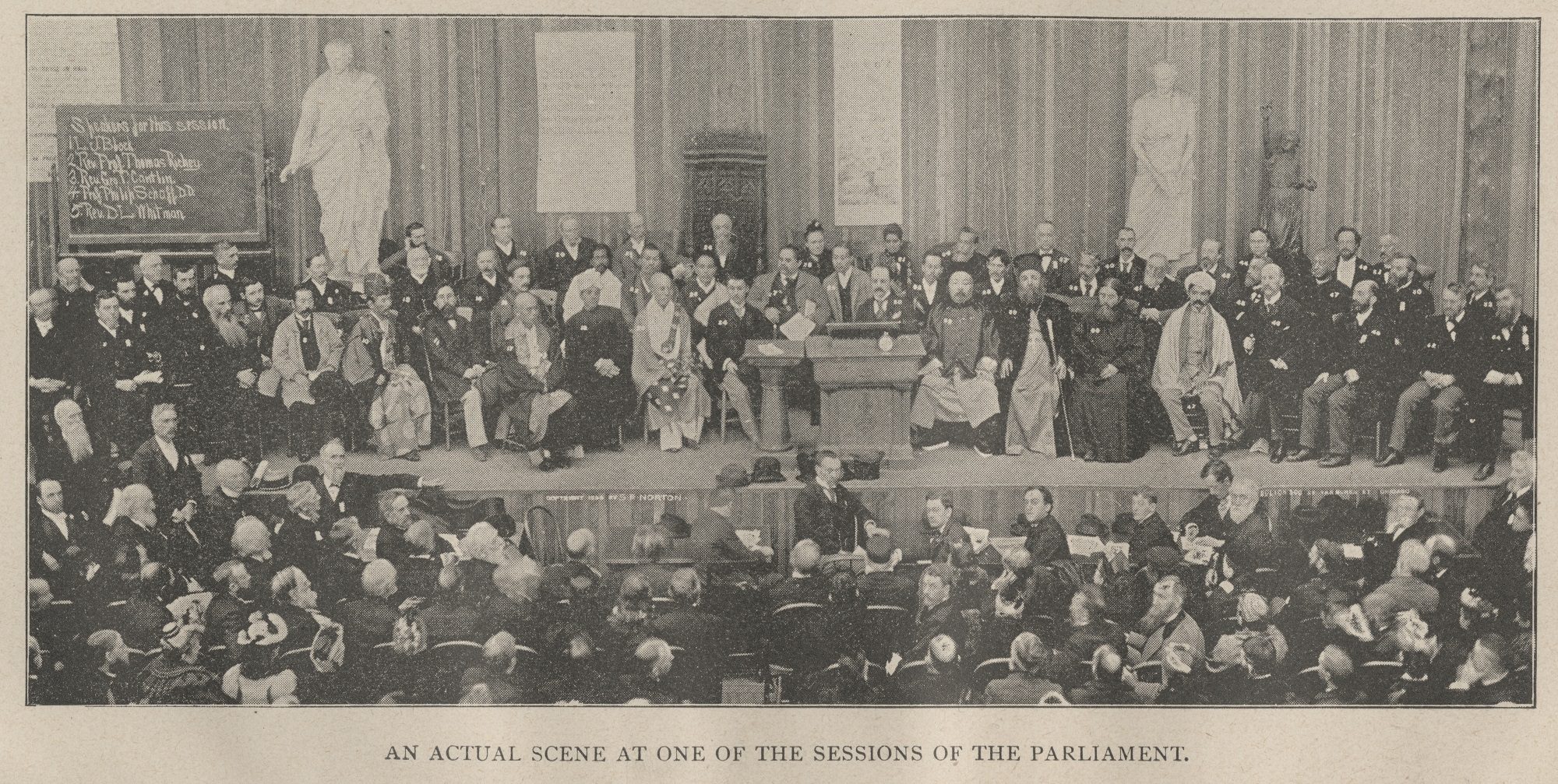
Parliament of the World’s Religions, 1893. CHM, ICHi-062640
Further awareness of Islam came at the WCE’s ancillary interfaith gathering, the Parliament of the World’s Religions. Mohammed Alexander Russell Webb, a Euro-American convert to Islam and founder of the Islamic Propaganda Movement, represented the Muslim perspective during the 16-day gathering.
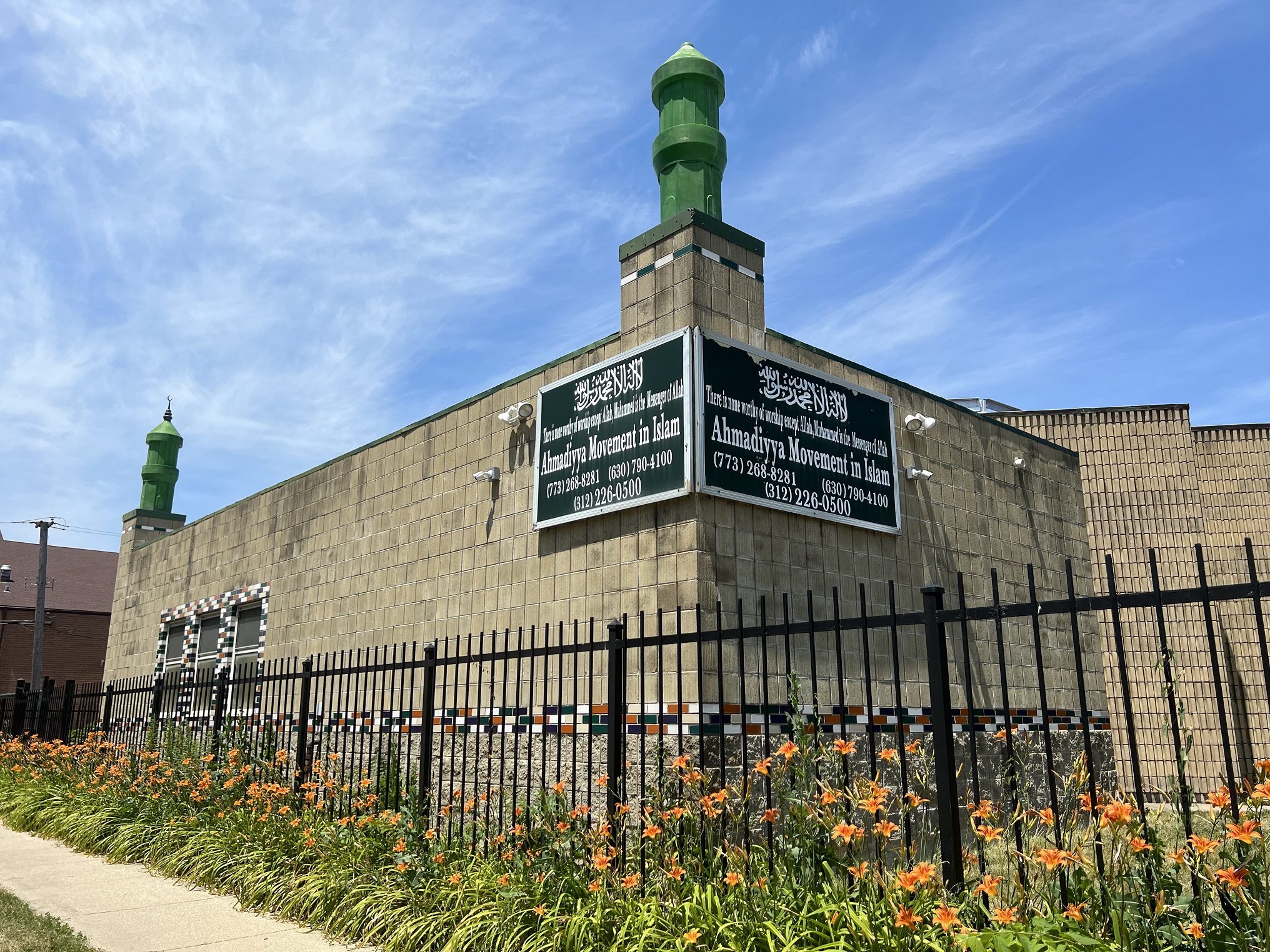
Built in 1922, Al-Sadiq Mosque is one of the earliest purpose-built ones in the country and is home to the historic Ahmadiyya community, Chicago. Photograph by Rebekah Coffman
The 20th century saw major growth and expansion of Chicago’s Muslim communities. In the early 1900s, one of the country’s oldest Muslim organizations was established by the Chicago Bosniak community, the Muslimansko Podpomagajuce Drustvo Dzemijetul Hajrije (Muslim Mutual Aid Association and Benevolent Society). The 1920s saw the founding of Chicago’s Ahmadiyya community through the missionary efforts of Mufti Muhammad Sadiq from India and the establishment of the first Ahmadi Mosque. The Nation of Islam, founded by Wallace Fard Muhammad in Detroit, found home in Chicago in the 1930s through the leadership of Elijah Muhammad. The years following World War II saw an influx of immigrants and refugees from the Middle East and South Asia, yet again growing and shifting community presence.
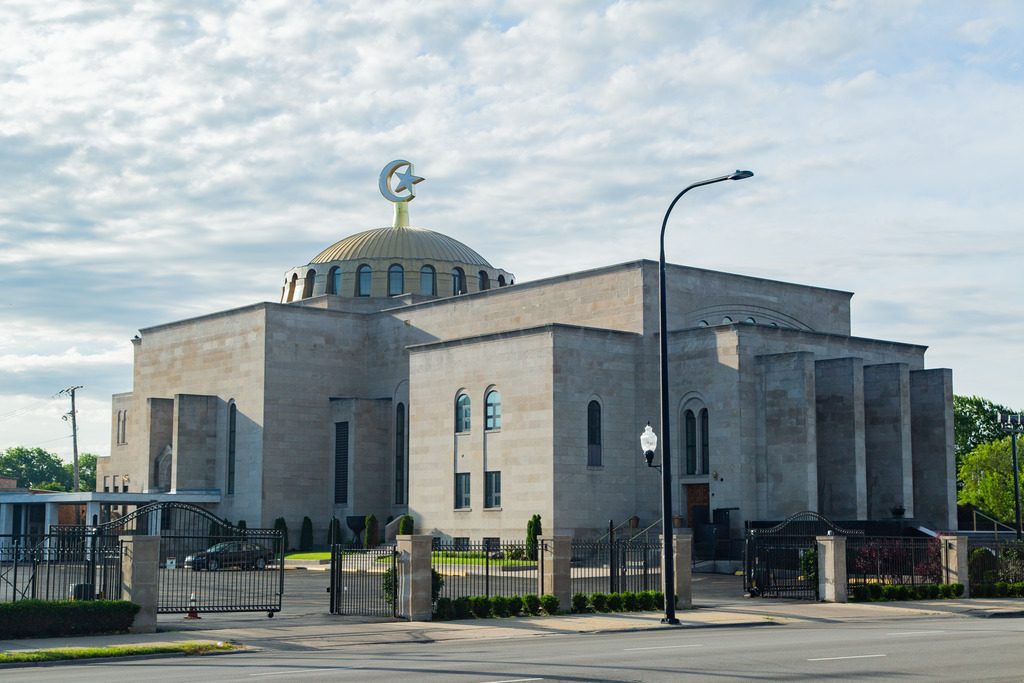
Mosque Maryam in Chicago is an example of a former Greek Orthodox Church that was repurposed as a mosque by the Nation of Islam. CHM, ICHi-175829. Photograph by Timothy Paton Jr.
As communities formed around the city, places of gathering became essential. Mosques and Islamic centers were organized, many in adapted buildings such as homes, storefronts, and former churches or synagogues. Communities constructed buildings to house daily prayers, weekly Jum’ah (Friday prayer service), schools, and other community services. The need for more space shifted buildings from Chicago to the suburbs. Today, there are about 100 mosques in the Chicago metro area with more now in the suburbs than within city limits.
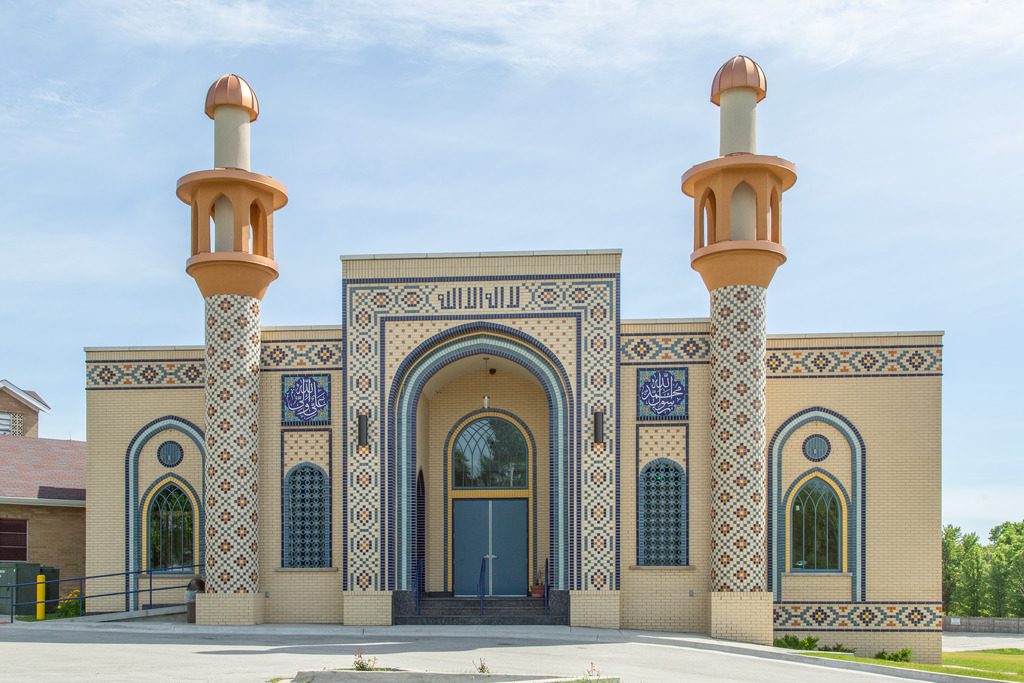
The Islamic Education Center in Glendale Heights, Illinois, is an example of a purpose-built mosque in the western suburbs. The community holds interfaith iftar dinners during Ramadan. CHM, ICHi-175837. Photograph by Timothy Paton Jr.
While many community activities take place within the walls of mosques or education centers, for the end of Ramadan, communities sometimes host Eid celebrations in large, outdoor spaces or in rented auditoriums or stadiums. These Chicago Sun-Times images are from such a community gathering hosted by the Islamic Foundation at the Odeum Expo Center in Villa Park in 1983.
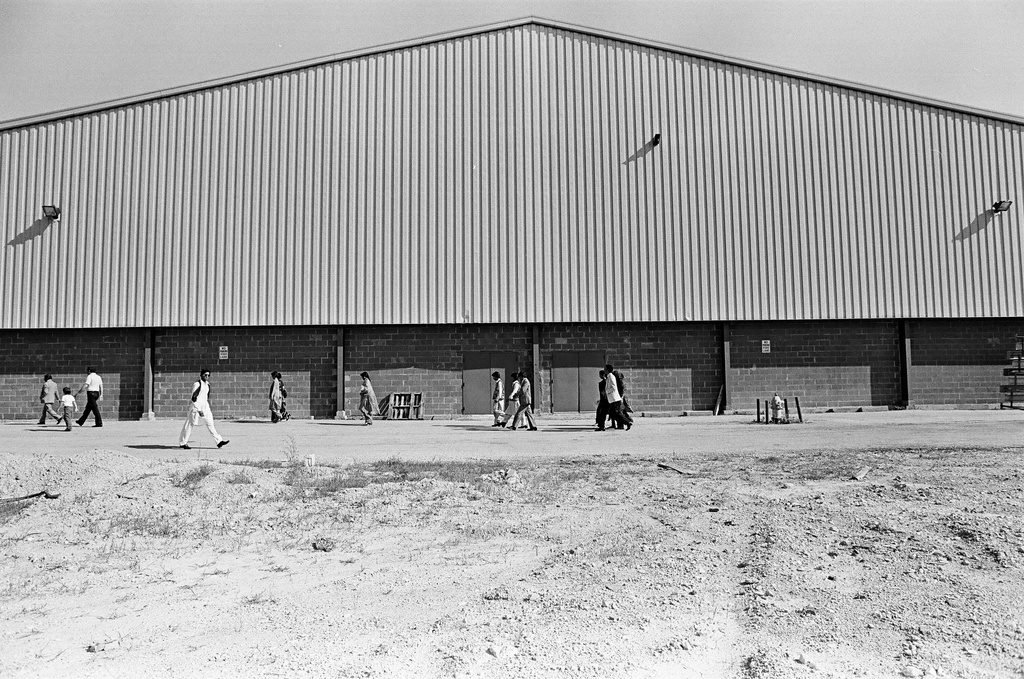
Exterior view of the Odeum Expo Center in Villa Park, Illinois, 1983. ST-19041602-0012, Chicago Sun-Times Collection, CHM
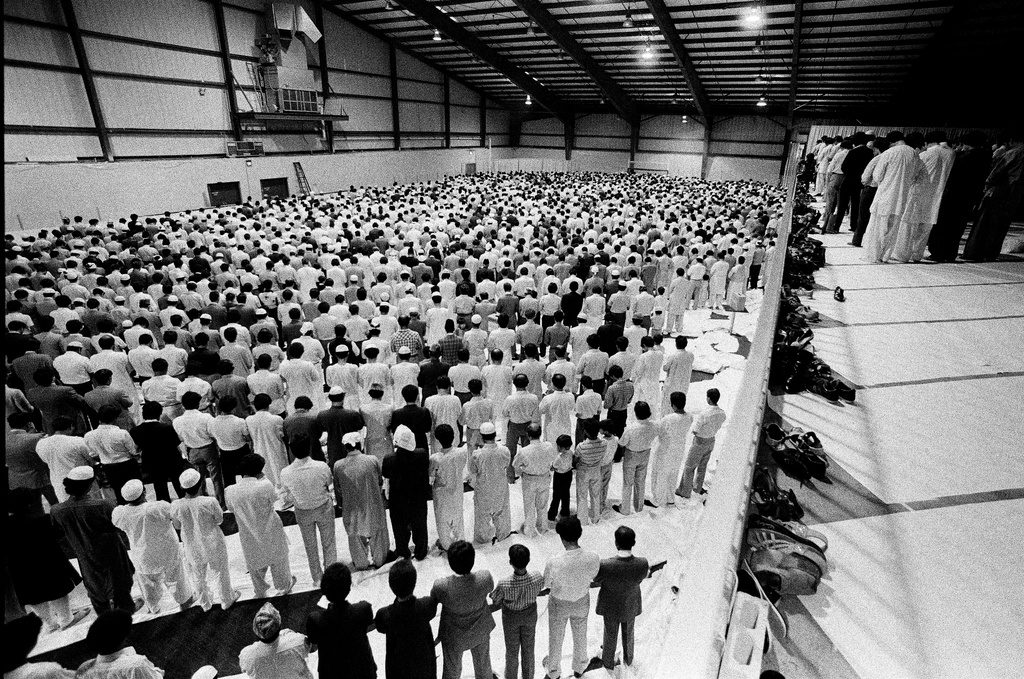
Communal prayer during Eid al-Fitr, hosted by the Islamic Foundation at the Odeum Expo Center. ST-19041602-0074, Chicago Sun-Times Collection, CHM
The Islamic Foundation (IF) was established in 1974 by local families under the direction of community leaders including Abdul Hameed Doger and Dr. Zia Hassan to serve the Muslim community of Chicago’s western suburbs. IF began meeting in rented facilities in 1975. By the 1980s, its membership had grown to 200 families, and IF purchased the former Madison Elementary School building in Villa Park. The Eid gathering in these images took place during this transitional period, and thousands of people came to the rented auditorium to celebrate together. The community later started a full-time Islamic school in 1988. By the 1990s, the foundation had more than 2,000 members and a large expansion project took place. Today, the IF is one of the largest Islamic centers in the country and includes the IF Masjid, a library, community center, banquet hall, meeting rooms, as well as an expanded IF School. Dr. Shakeela Hassan, local community leader and widow to Dr. Zia Hassan, describes Ramadan as a time when generosity and charitable giving are at their peak, providing the opportunity to do good in the community—a spirit reflected through the Islamic Foundation’s history.
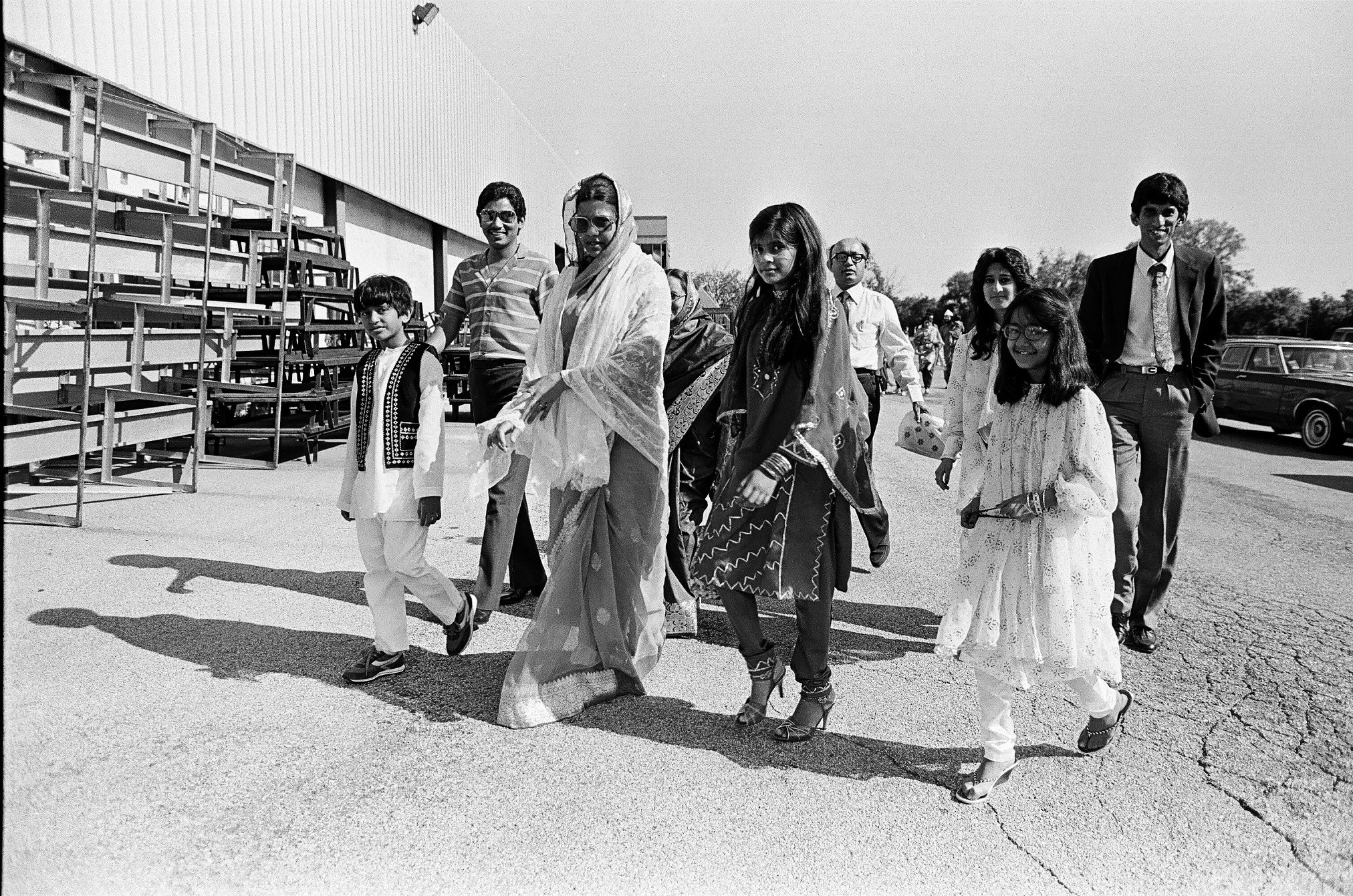
Above and below: Attendees at Eid al-Fitr at the Odeum Expo Center. ST-19041602-0015 and ST-19041602-0042, Chicago Sun-Times Collection, CHM
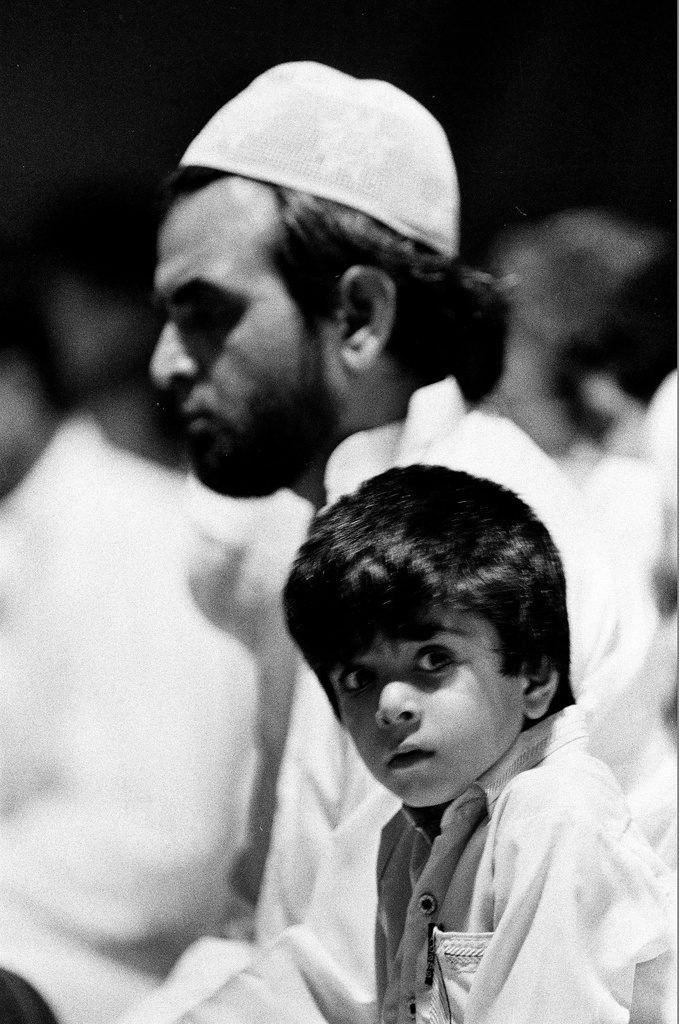
Additional Resources
- See more images of the Eid al-Fitr celebration in Villa Park
- Read the Encyclopedia of Chicago entries on Muslims, Bosnians, Egyptians, Palestinians, Syrians, and Pakistanis
- Listen to oral history interviews from our project American Medina: Stories of Muslim Chicago
- View images that were featured in our past exhibition American Medina: Stories of Muslim Chicago